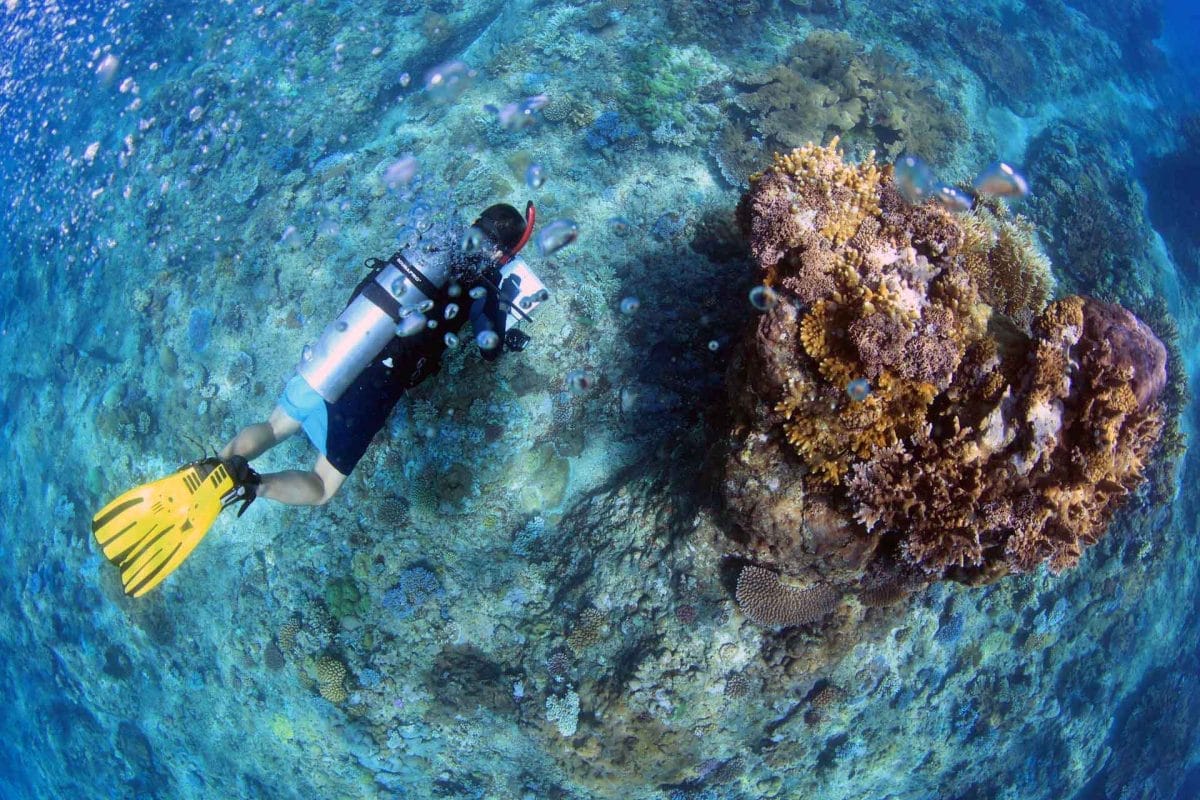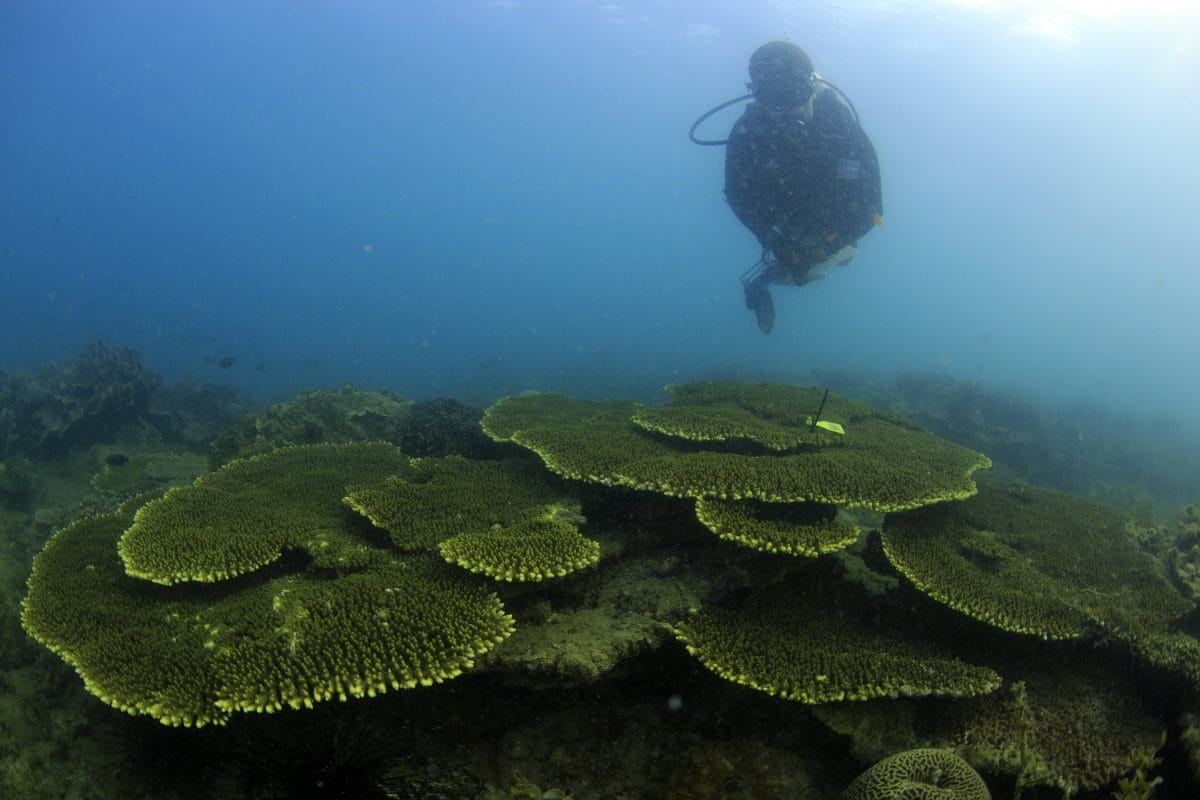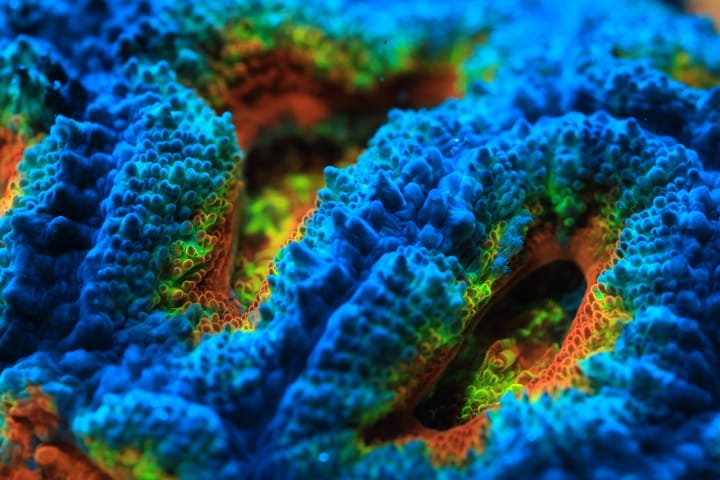Corals are no longer dying, and some reefs are getting bigger – what is all the fuss about?
Unfortunately, corals are still very much under threat. The Great Barrier Reef has lost more than half of its corals in the last 25 years, and over 80% of Caribbean corals have disappeared.
Whilst some reefs are thriving, these are generally only found in highly protected areas, where human disturbance is minimised. Only 6% located in well managed protected areas.
Coral reefs are home to a quarter of all marine life despite making up less than 0.1% of the ocean floor. There is no wonder that they are known as the rainforests of the sea! Reefs are hugely important to marine biodiversity. This is why so many people around the world are working to help protect and restore them.
Learn more about coral and the work the Horniman is doing to help save corals.
Didn’t corals survive when the earth was much hotter than it is now?
Coral reefs have existed during periods of higher global temperatures over the millions of years throughout Earth’s long history. However, the current pace and magnitude of warming are causing significant stress on coral ecosystems that modern science has not seen before.
Previously, corals have had thousands of years to adapt as the climate has warmed gradually. Presently, the climate is warming at an unprecedented rate, giving no time for today’s coral to adapt.
Human activities such as burning fossil fuels, manufacturing goods and clearing large forests are leading to global warming. This is causing coral bleaching. This coral bleaching could result in long-term reef degradation, and perhaps complete collapse.

Aren’t overpopulation, fishing, industry and pollution bigger threats to coral reefs than rising water temperatures?
No.
Overpopulation, fishing, industry, and pollution are looming threats to coral reefs. But it is rising ocean temperatures and rapid climate change that are considered the more urgent threat to corals.
A 2024 update to the Red List of Corals highlighted rising temperatures are pushing many coral species to the brink of extinction. This is because of the demonstrable link between climate change and coral bleaching, which significantly weakens corals and makes them vulnerable to disease and death.
Is coral bleaching a part of a natural cycle, that corals can recover from?
Yes, coral bleaching can sometimes occur as part of a natural cycle, and corals can recover from it.
However, the frequency and severity of bleaching events are increasing unnaturally because of changes to the climate and the impact of human activity.
When coral bleaching becomes a more regular occurrence, this makes it much harder for corals to recover. Now, over 40% of reef-building corals – those with hard structures – are at risk of being wiped out in the coming decades.

Doesn’t evolution mean that corals can adapt to changing conditions?
Yes, corals can evolve in response to climate change, but the rate of adaptation may not run parallel with the rapid warming of the ocean. Essentially, it is getting too warm too fast.
Corals can adapt through natural selection, and some coral with beneficial traits such as better heat tolerance are better equipped to survive and reproduce.
However, this will still mean that a large proportion of the coral population will not adapt, and many coral reefs are facing significant challenges because of human prompted changes to the climate. Most trends show the environment changing more quickly than the adaption rate of coral.
Can corals migrate to cooler waters?
Yes, some coral species can and have already begun migrating to cooler waters in response to warming ocean temperatures.
While individual corals can’t physically move like a fish, bird or mammal might, coral populations can alter their distribution to cooler subtropical seas over longer periods of time. This is sometimes referred to as Poleward Migration, and some scientists suggest corals are beginning to colonise cooler regions miles away from their original habitats.
While migration offers some hope, it’s not a catch-all solution. The rapid rate of these changes to the climate, as well as other factors such as ocean acidification, make it difficult for corals to keep up especially given coral migration is a slow process.
The impact of coral migration also remains partly unknown. The knock-on effect of coral arriving in new ecosystems could present new environmental challenges. What could it displace? How might it impact local species?

Is the Great Barrier Reef really getting bigger?
Coral is a remarkable organism and, when conditions are favourable, it can recover very quickly.
Although some areas of the Great Barrier Reef are showing signs of recovery, it is unlikely they will return to their pre-bleaching condition before being impacted by another bleaching event.
Added to this, they are regrowing with different proportions of coral species compared to before large scale bleaching events. This leads to a less diverse ecosystem, which can limit the habitat for other species that live on coral reefs, such as different fish.
There is evidence of growth and recovery in the Great Barrier Reef, with reports of significant regrowth in Acropora coral. But, it is still vulnerable to climate change, and any recovery can be reversed by events like marine heatwaves and other disturbances such as ocean acidification, increasing sediment and contaminants.


